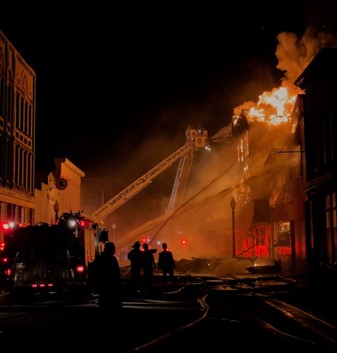Fire safety is paramount in any environment—be it a workplace, residence, or public facility. By embracing best practices, leaders and occupants can significantly mitigate fire risks and protect both lives and property. This article explores core strategies for attaining fire safety excellence, focusing on risk analysis, preventative measures, training, and continuous improvement.
Evaluating Risks to Identify Vulnerabilities
A comprehensive fire safety plan begins with a detailed evaluation of potential fire risks. This includes examining building materials, electrical systems, storage procedures, and heating equipment. Pinpointing sources of ignition—such as overloaded circuits, open flames, and improperly maintained machinery—allows stakeholders to address issues before they escalate.
Once risks are identified, prioritizing them helps guide the implementation of tailored safeguards. This approach ensures resources are used efficiently and helps prevent incidents that could cause costly damage or harm.
Implementing Preventative Systems and Measures
Preventative measures form the backbone of fire safety excellence. Smoke detectors, fire alarms, sprinkler systems, and fire extinguishers should be installed and regularly tested to ensure they function when needed. Utilizing fire-resistant construction materials and employing passive protection measures—like fire doors and compartmentalization—can also limit the spread of flames and smoke.
Moreover, maintaining clear exits and keeping combustible materials away from heat sources can significantly reduce the likelihood of a fire. Together, these preventative steps form a strong first line of defense against fire hazards.
Providing Ongoing Training and Education
Even the best fire safety systems require knowledgeable individuals to operate them effectively. Regular training sessions and fire drills ensure that everyone in the building understands evacuation routes, emergency procedures, and the proper use of fire extinguishers. This preparation reduces panic and increases efficiency during an actual emergency.
In addition, education on recognizing early warning signs—like overheating equipment or suspicious odors—empowers individuals to act swiftly. Well-informed employees and residents can be pivotal in preventing minor issues from escalating into full-blown emergencies.
Maintaining and Updating Safety Equipment
Fire safety equipment must be kept in top condition to remain reliable. Routine inspections of fire alarms, smoke detectors, and sprinklers help identify and resolve potential malfunctions before they become critical. Fire extinguishers should be checked for proper charge levels and accessibility, and emergency lighting should be tested regularly.
Establishing a maintenance schedule ensures these vital systems operate at peak performance. This ongoing care guarantees that the equipment will perform as designed when a fire threat arises, providing critical time to evacuate and suppress flames.
Enhancing Awareness and Cultivating a Safety-First Culture
Creating a fire safety culture requires consistent communication and reinforcement of best practices. Regularly sharing updates on safety protocols, celebrating fire safety successes, and encouraging employee feedback all contribute to a stronger sense of responsibility and vigilance.
This culture should extend to contractors, visitors, and tenants, ensuring that everyone entering the building understands fire prevention’s importance. By fostering a safety-first mindset, organizations can reduce complacency and maintain high standards over the long term.
Adhering to Fire Safety Regulations and Standards
Compliance with fire safety codes and regulations is a legal obligation and critical to achieving safety excellence. Codes set minimum requirements for building design, fire detection systems, and emergency exits. Working closely with local fire marshals and inspectors ensures that a facility meets or exceeds these standards.
Staying current with changing regulations and industry best practices helps organizations adapt to new risks and technologies. By demonstrating a commitment to compliance, companies and property managers reassure stakeholders that safety is a top priority.
Leveraging Advanced Technology and Data
Modern technology offers new ways to improve fire safety outcomes. Advanced fire detection systems, IoT-enabled sensors, and AI-powered analytics can provide early warnings and real-time insights. These tools help organizations respond quickly to fire risks, enhancing prevention and emergency response capabilities.
Integrating these technologies into a broader fire safety strategy allows more intelligent decision-making. Over time, data collected from these systems can reveal patterns, pinpoint weaknesses, and guide targeted improvements.
Committing to Continuous Improvement
Fire safety is not a one-time effort; it’s an ongoing process that evolves with the environment and its occupants. Conducting regular fire safety audits and incorporating feedback from drills and inspections helps refine protocols. Learning from past incidents—whether in the same facility or from external case studies—provides valuable insights that prevent repeat mistakes.
Organizations keep their fire safety programs robust and adaptable by maintaining a review, adjustment, and improvement cycle. This proactive approach ensures that the commitment to safety remains unwavering no matter how conditions change.
Achieving fire safety excellence requires more than just compliance with regulations—it demands a holistic approach incorporating prevention, training, maintenance, culture-building, and innovation. By prioritizing these fundamental practices, organizations can establish safer environments, protect lives, and foster a legacy of responsibility and care.
